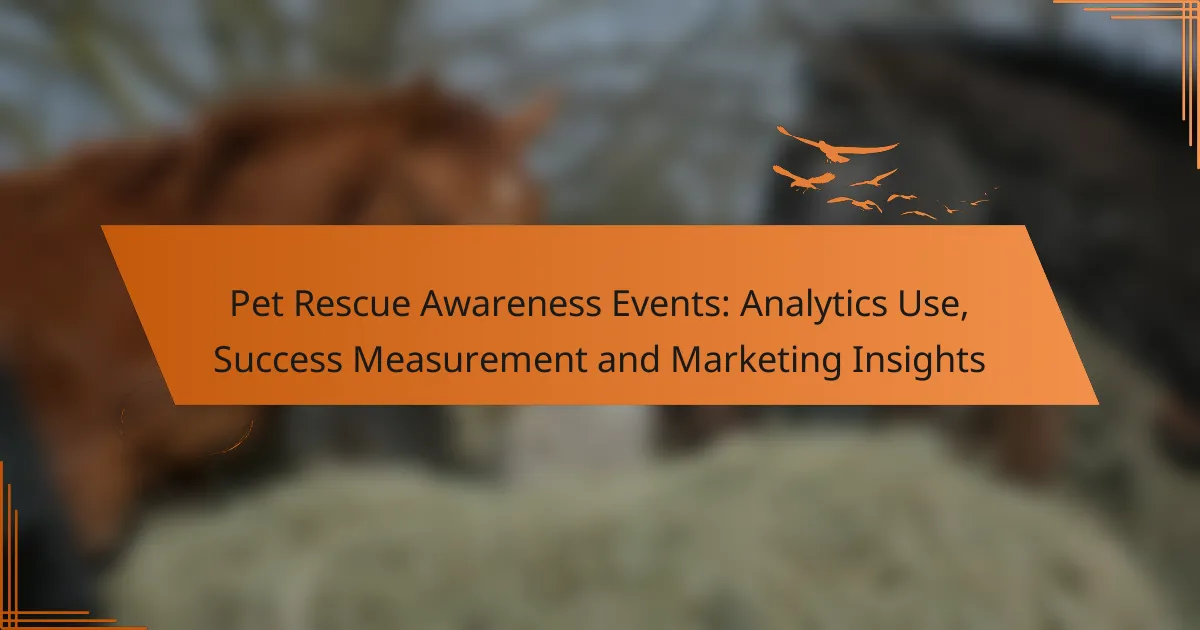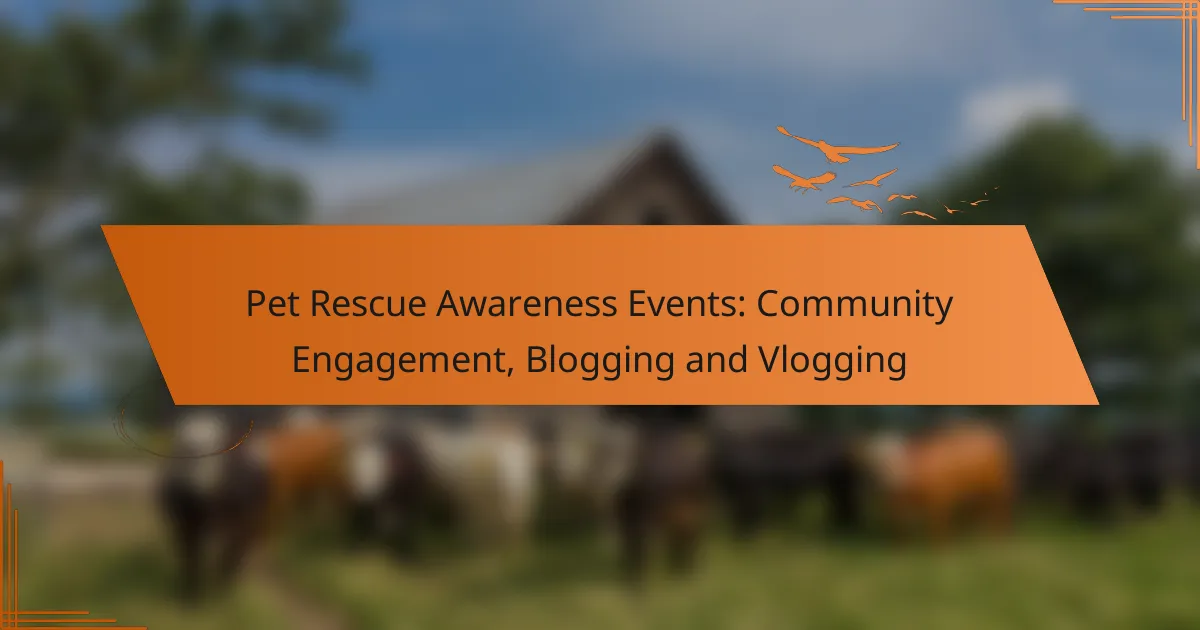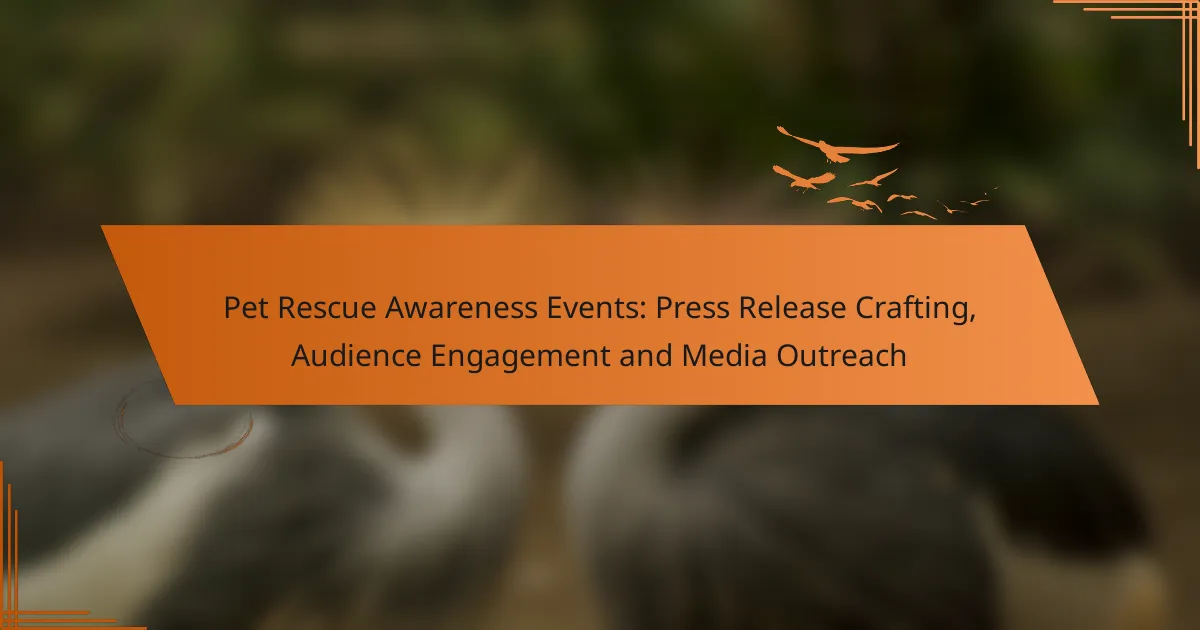Pet rescue awareness events play a crucial role in fostering community support and engagement. By leveraging effective email marketing strategies, organizations can significantly boost attendance and create meaningful connections with potential attendees. Engaging content and targeted campaigns not only inform but also inspire participation, ultimately enhancing the impact of these vital events.
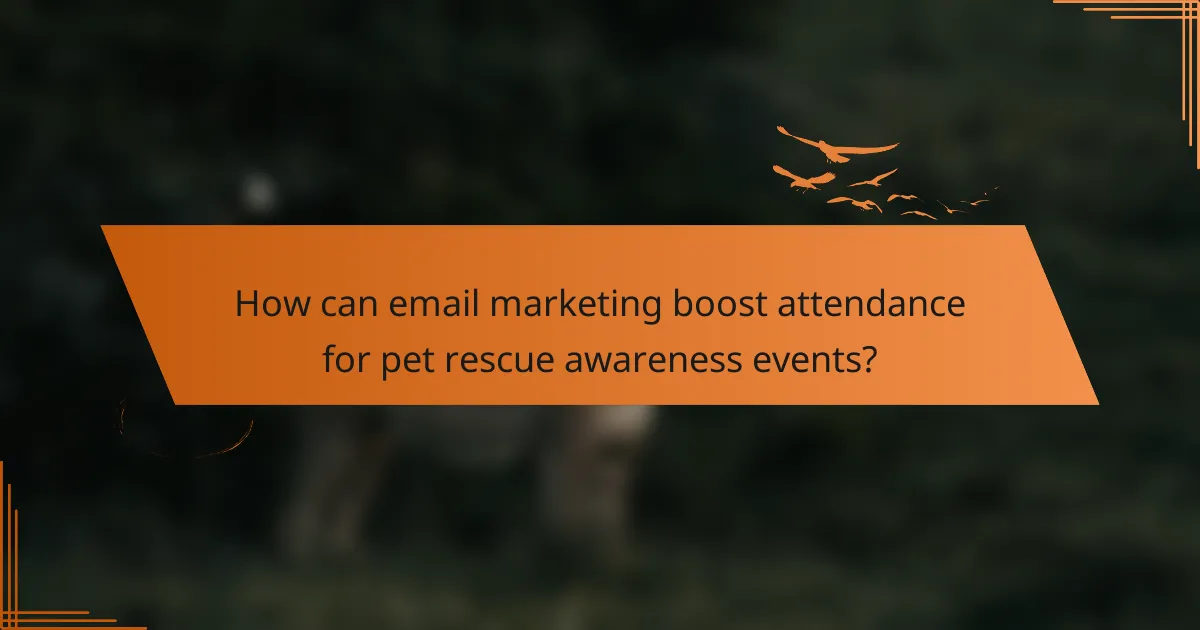
How can email marketing boost attendance for pet rescue awareness events?
Email marketing can significantly enhance attendance at pet rescue awareness events by effectively reaching and engaging potential attendees. By utilizing targeted campaigns, engaging content, and timely reminders, organizations can create a compelling case for participation.
Targeted email campaigns
Targeted email campaigns focus on specific segments of your audience, ensuring that the content resonates with their interests. For pet rescue events, segment your list based on factors such as previous event attendance, volunteer involvement, or pet ownership status. This approach increases the likelihood of engagement and attendance.
Consider using tools that allow for demographic and behavioral segmentation. For example, you might send different messages to families with pets versus individuals interested in volunteering.
Engaging subject lines
Crafting engaging subject lines is crucial for improving open rates. A compelling subject line should be concise, clear, and evoke curiosity or urgency. For instance, “Join Us to Save Lives: Pet Rescue Awareness Event This Saturday!” can motivate recipients to open the email.
A/B testing different subject lines can help identify what resonates best with your audience. Experiment with questions, exclamations, or even emojis to see what drives the highest engagement.
Personalized content strategies
Personalization goes beyond using the recipient’s name; it involves tailoring content to match their preferences and behaviors. Include information about pets similar to those they have shown interest in or highlight local rescue stories that may resonate with them.
Utilizing dynamic content in your emails can enhance personalization. For example, if a recipient has previously adopted a dog, include success stories of dog adoptions in your event promotion.
Incentives for early registration
Offering incentives for early registration can boost attendance rates. Consider providing discounts, exclusive merchandise, or entry into a raffle for those who register before a certain date. This creates a sense of urgency and encourages prompt action.
Communicate these incentives clearly in your emails. For example, “Register by Friday to receive a 20% discount on your event ticket!” can motivate recipients to act quickly.
Follow-up reminders
Sending follow-up reminders is essential to keep your event top-of-mind as the date approaches. Schedule reminders one week and one day before the event, highlighting key details and any last-minute updates.
Utilize a friendly tone in these reminders, and consider including a countdown timer or a checklist of what to bring. This can help attendees feel prepared and excited about participating in the event.
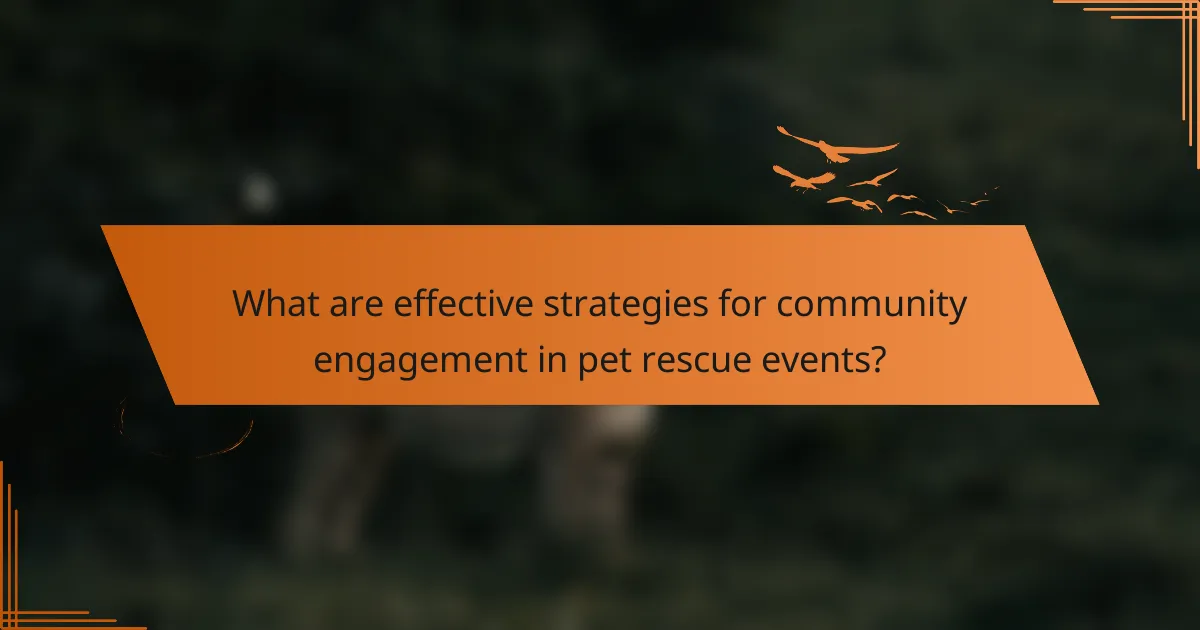
What are effective strategies for community engagement in pet rescue events?
Effective community engagement in pet rescue events involves creating connections with local residents and organizations to foster support and participation. This can be achieved through various methods, including social media, partnerships, and interactive activities that resonate with the community’s interests.
Social media integration
Utilizing social media platforms is essential for promoting pet rescue events and engaging the community. Regular posts featuring adoptable pets, event details, and success stories can help build a following and encourage shares among local users. Consider using targeted ads to reach specific demographics in your area.
Engagement can be enhanced by hosting live Q&A sessions or virtual tours of the rescue facility, allowing potential adopters to connect with the animals and staff. Use hashtags relevant to your community to increase visibility and encourage user-generated content.
Local partnerships with businesses
Forming partnerships with local businesses can significantly boost community engagement for pet rescue events. Collaborate with pet supply stores, veterinary clinics, and cafes to sponsor events or provide resources. These businesses can help promote the event through their networks, attracting more attendees.
Consider offering incentives, such as discounts or free services, for customers who adopt pets during the event. This not only encourages attendance but also strengthens community ties and promotes a culture of support for local rescues.
Volunteer involvement opportunities
Encouraging volunteer participation is crucial for the success of pet rescue events. Create various roles for volunteers, such as event coordinators, animal handlers, or outreach specialists, to cater to different skill sets and interests. This inclusivity fosters a sense of ownership and commitment among community members.
Promote volunteer opportunities through local schools, community centers, and online platforms. Providing training sessions and recognition for volunteers can enhance their experience and encourage long-term involvement with the rescue organization.
Interactive event activities
Incorporating interactive activities into pet rescue events can significantly enhance community engagement. Activities like pet contests, training demonstrations, or meet-and-greets with adoptable animals create a fun atmosphere that encourages participation. These experiences can make the event memorable and foster a connection between attendees and the animals.
Consider offering hands-on workshops, such as pet care tips or DIY pet toys, to engage attendees of all ages. Providing food trucks or local vendors can also create a festive environment, making the event more appealing to families and encouraging them to stay longer.
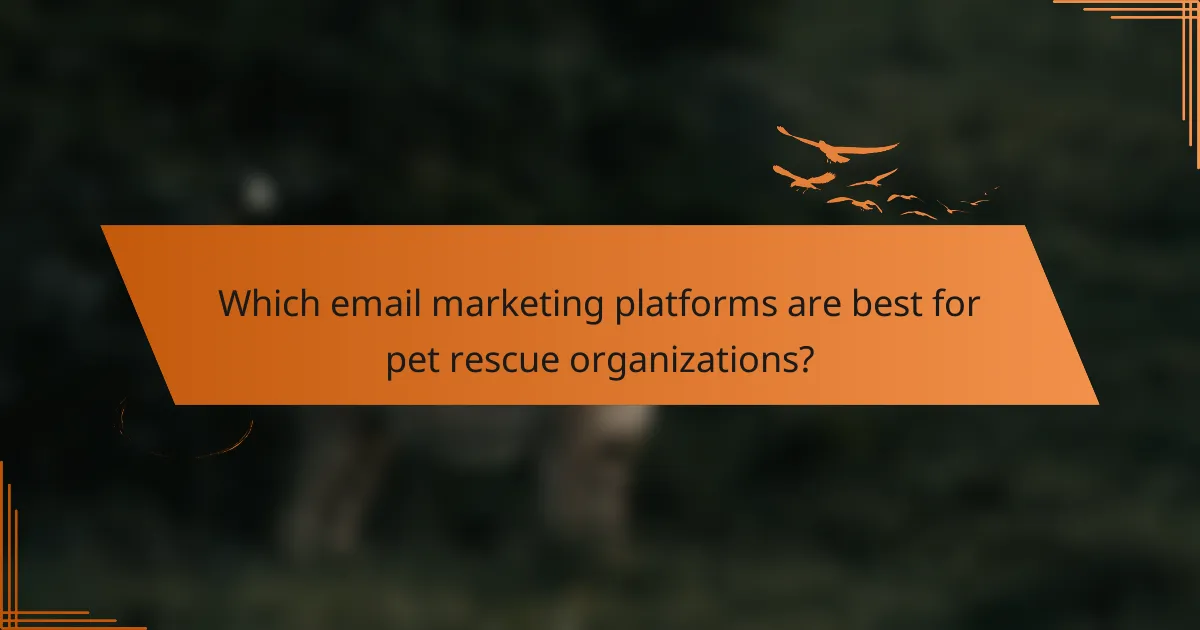
Which email marketing platforms are best for pet rescue organizations?
Pet rescue organizations benefit from email marketing platforms that offer user-friendly interfaces, nonprofit discounts, and features tailored for community engagement. The best platforms help streamline communication, boost attendance at events, and enhance donor relationships.
Mailchimp for nonprofits
Mailchimp is a popular choice for nonprofits due to its intuitive design and robust features. It offers a free tier for organizations with fewer than 2,000 subscribers, making it accessible for smaller rescues. The platform includes customizable templates, automation tools, and analytics to track campaign performance.
Additionally, Mailchimp provides a 15% discount for eligible nonprofit organizations on paid plans. This can help pet rescues maximize their marketing budget while effectively reaching their audience.
Constant Contact features
Constant Contact is known for its excellent customer support and extensive resources for nonprofits. It offers a 30-day free trial, allowing organizations to test its features before committing. Key functionalities include event management tools, social media integration, and list segmentation to target specific audiences.
Moreover, Constant Contact provides a discount for nonprofits, which can make it a cost-effective option for pet rescues looking to enhance their email marketing efforts.
Sendinblue pricing advantages
Sendinblue stands out for its flexible pricing structure, which is based on the number of emails sent rather than the number of subscribers. This can be particularly advantageous for pet rescue organizations that may have fluctuating subscriber counts. The free plan allows for up to 300 emails per day, making it suitable for small rescues.
Additionally, Sendinblue includes features like SMS marketing and marketing automation, which can help pet rescues engage with their community in multiple ways. This versatility can enhance outreach efforts and improve event attendance.
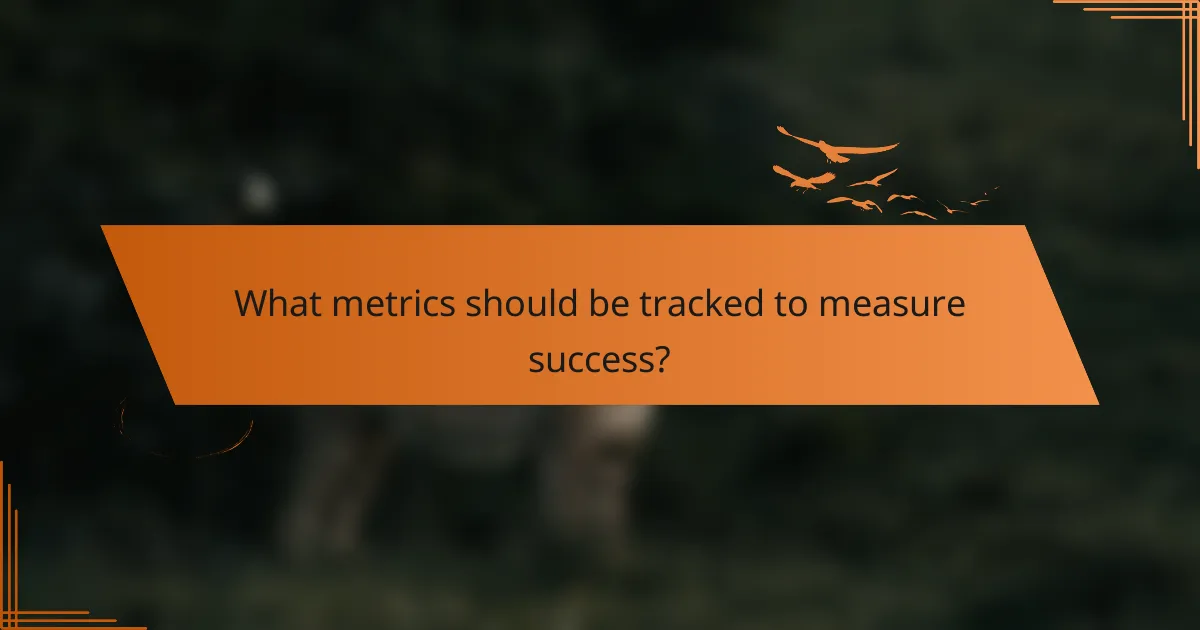
What metrics should be tracked to measure success?
To effectively measure the success of pet rescue awareness events, focus on key metrics such as email open rates, click-through rates, event attendance numbers, and community feedback. These indicators provide insights into engagement levels and overall impact.
Email open rates
Email open rates indicate how many recipients opened your emails, reflecting the effectiveness of your subject lines and overall interest in your events. Aim for open rates between 20-30%, which are considered average for nonprofit organizations.
To improve open rates, segment your email list based on previous interactions and tailor your messaging accordingly. Use compelling subject lines that create urgency or highlight the benefits of attending the event.
Click-through rates
Click-through rates measure the percentage of email recipients who clicked on links within your emails, showing how well your content drives action. A good click-through rate typically falls between 2-5% for nonprofit campaigns.
Enhance click-through rates by including clear calls-to-action (CTAs) and visually appealing buttons. Test different placements and wording for your CTAs to find what resonates best with your audience.
Event attendance numbers
Tracking event attendance numbers helps gauge the effectiveness of your marketing efforts and the appeal of your events. Set realistic attendance goals based on previous events and consider factors like venue capacity and local interest.
To boost attendance, promote your events through multiple channels, including social media and community partnerships. Offering incentives, such as early bird registration discounts or giveaways, can also encourage more participants.
Community feedback
Community feedback provides qualitative insights into how your events are perceived and areas for improvement. Collect feedback through surveys, social media comments, or direct conversations during and after events.
Encourage attendees to share their thoughts by offering a small incentive for completing feedback forms. Analyze this feedback to identify trends and make informed adjustments for future events, ensuring they better meet community needs.
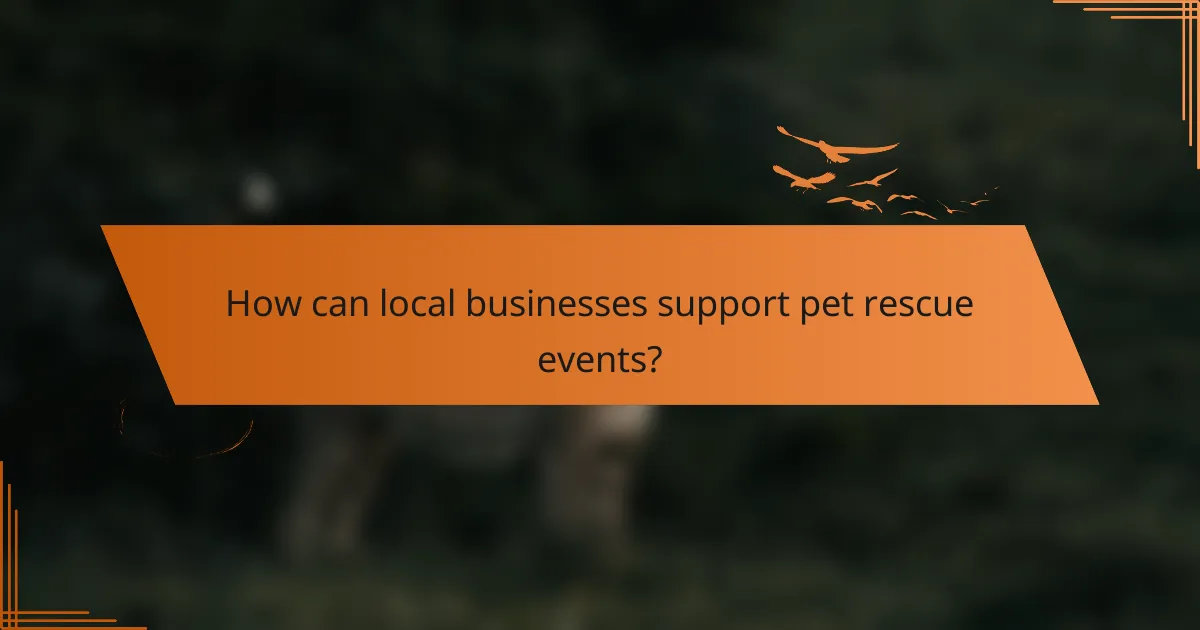
How can local businesses support pet rescue events?
Local businesses can play a crucial role in supporting pet rescue events by providing financial backing, resources, and promotional efforts. Their involvement not only enhances the event’s success but also strengthens community ties and boosts their own visibility.
Sponsorship opportunities
Businesses can become sponsors of pet rescue events by contributing funds or services in exchange for promotional benefits. This could include logo placement on event materials, mentions in social media campaigns, or recognition during the event itself. Sponsorship levels can vary, allowing businesses to choose options that fit their budget, ranging from a few hundred to several thousand dollars.
When considering sponsorship, businesses should evaluate the potential return on investment. Engaging with local pet lovers can enhance brand loyalty and attract new customers who appreciate community involvement.
Product donations for raffles
Donating products for raffles is an effective way for businesses to support pet rescue events while gaining exposure. Items such as pet supplies, gift certificates, or branded merchandise can be attractive prizes that encourage ticket sales. Businesses should aim to provide items that resonate with pet owners to maximize interest.
It’s beneficial to coordinate with event organizers to ensure that donated items align with the event’s theme and audience. This collaboration can lead to increased visibility for the business and a higher likelihood of attracting new customers.
Promotional collaborations
Local businesses can engage in promotional collaborations with pet rescue events by cross-promoting each other’s services. This could involve sharing social media posts, co-hosting events, or offering discounts to attendees. Such partnerships can amplify reach and create a sense of community among local businesses and pet lovers.
To make the most of these collaborations, businesses should establish clear goals and communication strategies with event organizers. This ensures that both parties benefit from the partnership and that the promotional efforts are well-coordinated and effective.

